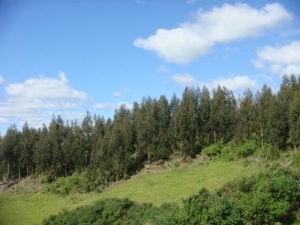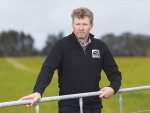Forest owners say kinks in the laws covering the release of genetically modified organisms (GMOs) need to be ironed out.
They say it's no longer clear what's a GMO and what's not. Also, the decision by some regional councils to regulate GMOs in their regions is "simply unworkable".
Forest Owners Association technical manager Glen Mackie says the Forest Owners and Farm Forestry Associations have decided to support Federated Farmers' appeal about a rule in the draft Northland Regional Plan that will allow the council to regulate GMOs in their region.
He says foresters also support a change to the GMO regulations to clarify the definition of a GMO. This follows a 2014 High Court decision which changed the commonly accepted definition, making many crops and animals bred in New Zealand technically GMOs and therefore illegal.
"These legal kinks have got to go," Mackie says.
"Forest owners totally accept that GMOs need to be regulated, but it needs to be the responsibility of one authority, by people with the right skills, using a risk-based definition of a GMO."
GMO orchard trees, including virus-resistant papaya, are widely grown in the United States and elsewhere. But with the exception of insect-resistant poplar trees in China, no GM forest trees have been released internationally for commercial use.
"This will change. Sooner or later someone will come up with a straighter, stronger, faster growing pine tree – one that is sterile and doesn't produce pollen. When that happens, the decision whether or not to release it needs to be made by people who can analyse complex scientific data," says Mackie.
"Clearly, the Environmental Protection Agency (EPA) is best equipped to do this. That's what it's set up to do. But the Environment Court has recently decided that regional councillors should also be given the power to regulate GMOs in their regions.
"This means, if a superior forest tree, a disease-resistant tamarillo, a psyllid resistant potato or drought-tolerant ryegrass was developed using GM technology, it would need the approval of the EPA as well as each of the councils where the cultivar might be planted."
Mackie describes this as "bureaucracy gone mad". He also scratches his head about people in the regions wanting to giving this power to the same councillors they criticise for their planning and resource management decisions.
To add to the head-scratching, the definition of a GMO was been changed by a 2014 High Court decision.
"GMOs are regulated by the EPA, which has never allowed transgenic animals or plants to be released into the environment. However it does permit a wide range of crops – including grapes, fruit trees and grasses – to be bred using sophisticated chemical and radiation treatments," he says.
"Basically if a technique was in commercial use before 1998, the EPA has been giving it the green light. This includes those propagated and bred by tissue culture, artificial insemination, clonal propagation and other in-vitro treatments.
"The High Court ruling says that's wrong. It says that unless a sophisticated breeding technique is listed as exempt in the GMO regulations, the resulting organism is a GMO."
The EPA is now proposing a change in the regulations so that all organisms created using treatments in use before 29 July 1998 are not treated as GMOs. Organisms resulting from treatments developed after this date would continue to be regulated as GMOs.
Mackie says these changes restore the status quo. But in a submission to the EPA, the FOA argues that this fails to take into account scientific progress and innovation since 1998.
"Regulation should be based on the risks posed by a technology, not how old it is. That's illogical. Indeed, modern GMO technologies tend to be more precise and potentially pose less risk than those being used more than 18 years ago," he says.



















